How to disassemble the toilet flush tank: instruction on working with various designs
The toilet bowl is a sealed container into which tap water enters to flush at the right time. Thanks to the extremely simple design, easy repair of this plumbing device can be done with your own hands. And for this you need to know how to properly disassemble and assemble. Do you agree?
We will tell you in great detail how to disassemble the toilet flush tank, in what order the capacity is removed and the functional mechanisms are removed from it. Let us indicate in which situations it is necessary to remove it, and in which it is sufficient to perform actions without disassembling.
The article presented for familiarization lists typical malfunctions and cases requiring mandatory intervention. We examined the repair options for old and new models. For visual perception, information was supplemented with photo selections, diagrams, videos.
The content of the article:
Dismantling and disassembling the drain tank
A system for controlling the set and water level is in every toilet bowl. Modern toilets are equipped with mechanisms of a rather complicated design.
Apartment owners operate (and disassemble if necessary repairs) both obsolete models and technically advanced ones. The disassembly process can be carried out directly on site - without removing the tank or after dismantling the latter. Which option will be applied depends on various factors.
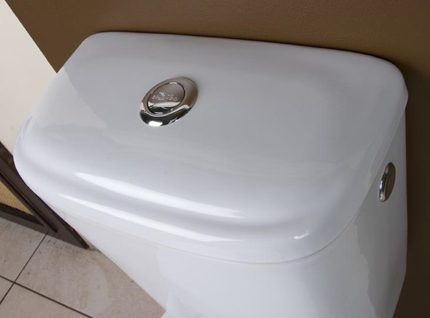
Dismantling is usually carried out with the aim of full tank replacement together with a mechanism for a more advanced model. The drive must also be removed in the event of a water leak at the junction with the toilet.For example, due to wear of the gaskets, breakage of the fixing bolts, and the appearance of microcracks in the housing.
Consider how a toilet bowl is removed in any of these situations.
Removing the water storage on the toilet
The classic design provides for mounting the toilet bowl on just two studs or bolts (d = 5-7 mm). Usually, metal (bronze, brass, steel) studs with double-threaded nuts are used as fasteners.
Steel fasteners were used on obsolete models. The service life of steel fasteners is relatively small. Sometimes such studs “burn out” from rust after a year of operation of the device.

Fastening to the base of the toilet bowl is usually done through two holes (or through 3) made in the bottom of the tank. The same two holes, in the same axes, are on the rear accessory shelf of the device.
Fixing pins are passed through the combined holes, gaskets are put on them on both sides and the nuts are tightened. The cavities of the tank and toilet bowl are combined by a common pipe, insulated at the docking point with a rubber sealing ring.
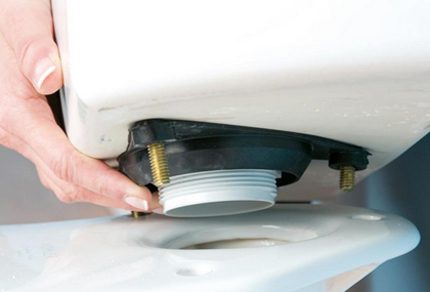
The task of how to remove the tank from the toilet flange is solved as follows:
- Close the central water valve.
- Disconnect the water supply hose.
- Release the drive by pressing the drain button.
- Unscrew the release button head and remove the tank top cover.
- Collect the remaining moisture inside the tank using a sponge.
- Unscrew the nuts on the mounting studs (on the bolts) under the extension shelf.
Now it remains to gently lift the tank, separating it from the installation site (perhaps with some effort, because sometimes the gasket sticks to it) and then move it to the place where further work is planned.
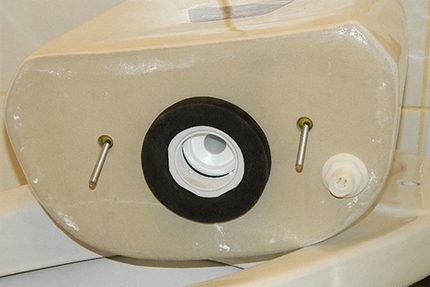
Next, find out how to quickly disassemble drain mechanismequipping all types of flushing plumbing devices.
Dismantling the drain
On modern models of the middle price segment, as a rule, a push-button mechanism for double water drainage (3/6 liters) is used. At the touch of a button, the operating mode is activated drain and bulk modules. You can stumble upon a variety of options for the execution of such mechanisms.
However, the assembly configuration for them is the same:
- a head with buttons and a threaded part for the valve mechanism;
- valve mechanism with a lower threaded part;
- sealing gasket;
- valve mounting nut.
With the top cover removed, the button head will already be twisted. It remains to remove the gasket from the mounting nut. The gasket (rubber ring) has an inner region in the shape of a pentagon or round.
The fastening nut (not always) has the same shape on the outer border. When assembled, the rubber seal ring is put on the nut. It is removed and the nut is turned off. The freed mechanism is easily removable. The filling system is attached in the same way.

The reinforcement material is plastic. If repair is necessary, the mechanism is disassembled, but it is easier to buy a replacement one.
On how to properly disassemble the tank for the care of valves, the video will “tell” in detail:
Dismantling the tank cap
Again, returning to the toilet models of the modern type, it should be noted that users often face a problem - how are covers removed on such models?
Indeed, these designs are somewhat different from outdated toilets in that they are made more technically, including cover fasteners. But in general, the principle remained the same - the cover is pressed by the nut included in the valve mechanism kit.
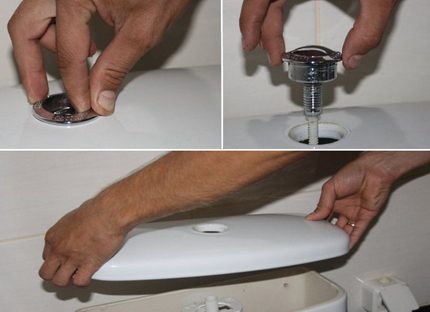
On new models, button heads, one-button and two-button, act as a clamping nut.
To remove one-button fasteners and remove the cover, the following steps are performed:
- The button is pressed as when draining the water and held in this position.
- Gently turn the crown with the button counterclockwise.
- Finally turn the head with the button out of the valve mechanism sleeve.
The threaded connection may vary on different models. There is a wide-bore external sleeve thread, as in the picture below, and also there is an internal sleeve thread for a rod of small diameter.
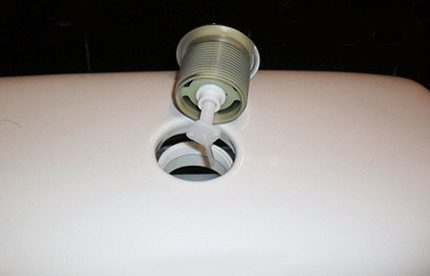
Along with single control buttons, the head of which is simply twisted, there are designs more difficult to disassemble, made with locks. Often this solution has two-button mechanisms.
The video manual demonstrates the procedure for removing the tank cap:
Dismantling the tank with two buttons
On the toilet cisterns, where a flush mechanism with two buttons is introduced, there are different methods of fastening. With this configuration, simply unscrewing the head with buttons sometimes fails.
In such situations, disassembly technology is as follows:
- It is necessary to press only one of the buttons (small) into the head housing.
- On the opened inner wall in the lower part a small groove will open.
- Gently squeeze the screwdriver through the slot.
- Remove one button (large) from the case and then another in the same way.
- Release the fixing screw located under the buttons.
After these operations, the tank cap with two buttons is removed without any difficulty.
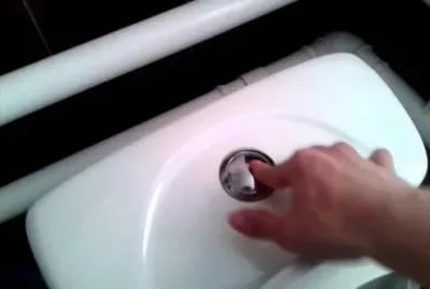
Still come across designs of tanks, where first you need to unscrew the decorative nickel-plated washer, then turn the lid 90 degrees - that is, install it across the tank. In this position, depress the locking brackets located inside the button head cup. After these manipulations, the cover is completely released from the fasteners.
Having successfully completed the procedure for releasing the tank from the lid, you need to find out the reason rebar incontinence and troubleshoot.
Removing an old-style toilet bowl
A number of outdated toilet models are still being exploited.It is more often necessary to engage in the repair of used products due to the significant wear of their components. But the owners of such structures do not have to think much about how to fix or remove toilet flush tank, due to the simplified design.
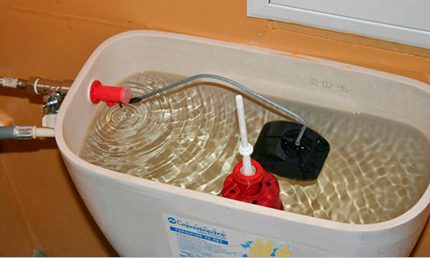
So, to dismantle the same cover, it is enough to twist the handle on the stem of the drain mechanism and unscrew the plastic (or metal) washer nut.
Under the lid inside the tank there is a float mechanism for water collection and a lever-valve drain mechanism. The valve system of such a mechanism is usually attached to the tank through two additional holes in the bottom.
The tank of the old design itself is removed in the same way as it is done with respect to new models. It is necessary to unscrew the two bolted joints in the area of the tank bottom.
The passage zone for water from the accumulator to the bowl on old toilets is isolated by an ellipsoidal sealing ring. Often in older systems there are overflow pipes fixed to the bottom of the tank with a plastic nut.
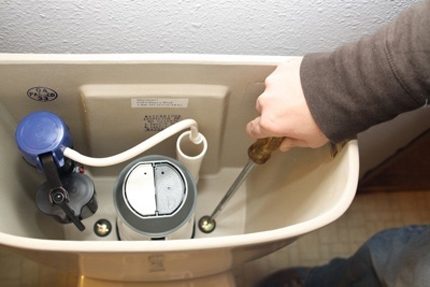
To dismantle the lever-valve drain mechanism, it will be necessary to untwist two more bolt connections that secure the rocker arm of the drain mechanism. Dismantling the water intake module is done by unscrewing only one nut from the outside of the tank body.
First, the water supply hose must be disconnected from the storage valve. It should be noted: there are models of tanks with water release levers embedded in the side wall. On such devices, the toilet lid is not fixed at all - it just lies, resting on the walls of the casing.
Repair without dismantling plumbing
A common reason for holding tank repair with the side handle is the failure of it - the device that launches the drain mechanism into action. To repair the handle, the tank is not removed from the seat, and the restoration of the function is carried out by replacement.
Work on the replacement of the handle is performed in the following order:
Having successfully completed the dismantling of a broken device, we proceed to install a new handle:
Faults - reason to disassemble the tank
Typical malfunctions that make it necessary to resort to disassembly are often:
- a leak at the time of discharge in the gasket area at the connection of the tank with the toilet bowl;
- leakage in the places of fastening of the drive to the toilet shelf;
- violation of the functions of the drain mechanism;
- violation of the functions of the mechanism of water intake.
Often, problems with leaks are eliminated by a simple tightening of the fastening nuts. The functionality of the drain and set mechanisms may be impaired due to insufficient water pressure in the centralized system. Therefore, before you begin to disassemble, you should make sure that there are no other options for eliminating defects.
Defects in functional fittings
If there is an involuntary flow of water from the tank into the toilet vessel, the closure ring is most likely defective. It needs to be replaced. The same effect can be observed when the closure mechanism does not work. A possible reason is that the control button is stuck.
Insufficient filling of the tank with water indicates some defects in the dialing module. Often the cause is the displacement of the float on the limit bar or its contact with other parts of the mechanism (tank wall).
If filling the tank with water does not occur in the normal manner, we perform the following steps:
After replacing the valves with a new set, it is necessary to configure it; step-by-step instruction on its implementation is given in one of popular articles our site.
A complete lack of draining is possible due to an inoperative set module or drain mechanism.
A few practical tips will help you deal with self-adjusting fittings.
Rules for the care of plumbing
When disassembling plumbing fixtures, each user should remember the principles of ceramic care. This is most directly related to repair work.
Ceramic products are resistant to chemicals, but are easily damaged by cleaning with metal mesh, abrasives and other similar substances. After repair, household plumbing should be cleaned with soft substances and materials.
Conclusions and useful video on the topic
All problems associated with the tank, and how to solve them are demonstrated in the following video:
Briefing before doing work related to repairing household appliances with your own hands is a voluntary matter. However, excess information never hurts in any endeavors. The more information you have about a particular object, the simpler and easier it is to complete all the actions.
Dismantling modern toilets, despite the simplicity of actions, also does not exclude access to instructions.
Want to talk about how you personally repaired the flush tank? Do you have any information to share with site visitors? Please leave comments in the block below.

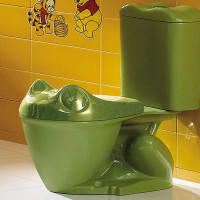 What to do if the drain tank does not hold water: causes and methods for troubleshooting
What to do if the drain tank does not hold water: causes and methods for troubleshooting 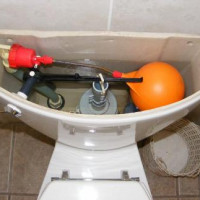 Flush mechanism for the toilet: device, principle of operation, an overview of various designs
Flush mechanism for the toilet: device, principle of operation, an overview of various designs 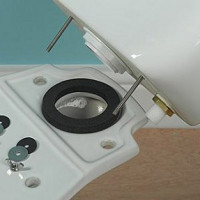 Replacing the toilet bowl: how to remove the old tank and put in a new one
Replacing the toilet bowl: how to remove the old tank and put in a new one 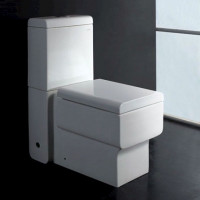 The toilet bowl is leaking: what should be done when a leak is detected
The toilet bowl is leaking: what should be done when a leak is detected 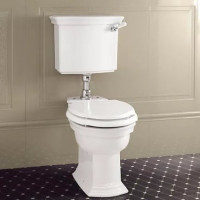 Why the toilet bowl sweats: the causes of fogging and how to eliminate them
Why the toilet bowl sweats: the causes of fogging and how to eliminate them 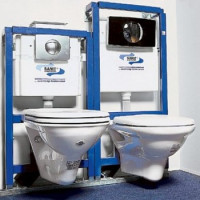 Securing the toilet for installation: step-by-step installation instruction
Securing the toilet for installation: step-by-step installation instruction  How much does it cost to connect gas to a private house: the price of organizing gas supply
How much does it cost to connect gas to a private house: the price of organizing gas supply  The best washing machines with dryer: model rating and customer tips
The best washing machines with dryer: model rating and customer tips  What is the color temperature of light and the nuances of choosing the temperature of the lamps to suit your needs
What is the color temperature of light and the nuances of choosing the temperature of the lamps to suit your needs  Replacement of a geyser in an apartment: replacement paperwork + basic norms and requirements
Replacement of a geyser in an apartment: replacement paperwork + basic norms and requirements
The most important thing when mounting or dismounting is not to forget to drain the water from the tank). And the rest is nothing complicated, if only there were suitable keys. It’s better, of course, to have a 10-face end on hand, but it’s easy to handle a carob. I had to do this job when I started to skip the cuff between the tank and the pedestal. There was no exit. I had to remove the top and coat with sealant.
For a long time there was an old Soviet toilet, regularly had to be repaired, and it was not difficult. It was possible to understand the design and easily eliminate the breakdown. Since the new modern toilet bowl was installed, it is no longer possible to repair it - most often, a breakdown requires replacing the entire filling immediately. Fortunately, it is standard, inexpensive and replaced on its own.